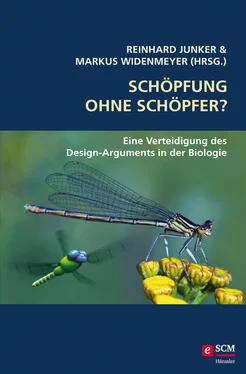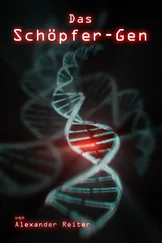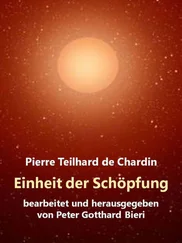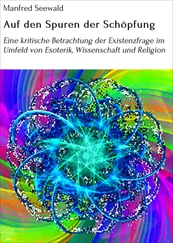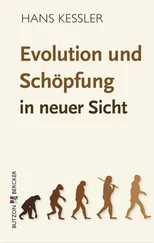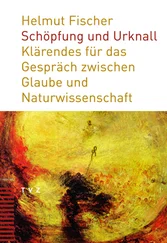18 POSER (2012, 284) drückt es so aus: „[E]in ‚Darwinscher Dämon‘, der im Zeitalter der Saurier den Homo sapiens hätte vorhersagen können, ist ausgeschlossen.“
19 Nach Ansicht dieser beiden Autoren. Wir sind nicht der Ansicht, dass Naturgesetze metaphysisch notwendig sind.
20 Originalzitat: „The theory of evolution is the fundamental conceptual framework of biology all scientific explanations of living phenomena must be consistent with. As it does not describe a universal law regarding a single natural phenomenon, such as gravity, but rather the principles of organismal change over time, based on the highly complex inputs and interactions of a multiplicity of different factors, evolutionary theory cannot be expected to remain static but is subject to change in the light of new empirical evidence.“
21 MÜLLER schreibt zwar „die Evolutionstheorie“, es gibt jedoch viele kausale Evolutionstheorien, was MÜLLER auch klar zum Ausdruck bringt, da er die Evolutionstheorie nicht für statisch hält.
22 Man könnte einwenden, dass naturwissenschaftliche Theorien in der Regel in der Entwicklung und noch mehr oder weniger unreif und daher nicht statisch sind. Für die Physik und Chemie trifft das aber offenkundig nicht zu. Erfolgreiche naturwissenschaftliche Theorien reifen im Sinne einer Verfeinerung. Im Falle von Evolutionstheorien bezüglich Innovationen ist die Situation dagegen ganz anders und die Flexibilität der kausalen Evolutionstheorien hat eine ganz andere Dimension. Bei den Kausaltheorien zur Evolution (um die es hier geht) gibt es einen klaren Trend von einer vor 50 Jahren noch relativ unangefochtenen Theorie (Neodarwinismus) hin zu einer Konkurrenz sehr verschiedener Ansätze, was man kaum als Ausreifen einer Theorie bezeichnen kann.
23 Über allgemeine Gesetzmäßigkeiten in der Biologie schreibt BEATTY (1995, 47, Fn. 3):„All generalizations about the living world a) are just mathematical, physical, or chemical generalizations (or deductive consequences of mathematical, physical, or chemical generalizations plus initial conditions), b) are distinctively biological, in which case they describe contingent outcomes of evolution“ (46f.). „… the evolutionary contingency thesis has nothing at all to say about whether there are laws of physics and chemistry“ (ebd.).
24 „[E]volutionary contingency undermines the very possibility for biological laws“ (BRAILLARD & MALATERRE 2015, 10).
25 BEATTY (1995, 75) nimmt Bezug auf Steven J. GOULD, der „Gesetze im Hintergrund“ mit den „kontingenten Details im Vordergrund“ der Biologie unterschieden habe. „What this means to me is that there may be genuine laws that are relevant to biology (e.g., laws of physics and chemistry), but those laws are not distinctively biological. What is distinctively biological are the contingent details, allowed but not necessitated by the presumed laws. The details can have most any degree of generality – and the degrees of generality of those details may change over time. And all the while evolution is making new rules and breaking old rules, the rules of evolution are themselves changing“ (BEATTY 1995, 75).
26 Kernannahmen der Modernen Synthese nach LALAND et al. (2015, 3) sind: „(i) evolutionarily significant phenotypic variation arises from genetic mutations that occur at a low rate independently of the strength and direction of natural selection; (ii) most favourable mutations have small phenotypic effects, which results in gradual phenotypic change; (iii) inheritance is genetic; (iv) natural selection is the sole explanation for adaptation; and (v) macro-evolution is the result of accumulation of differences that arise through micro-evolutionary processes.“
27 „Constructive development refers to the ability of an organism to shape its own developmental trajectory by constantly responding to, and altering, internal and external states“ (LALAND et al. 2015, 6).
28 „The latter view is distinctive for its emphasis on organismal causes of development, inheritance and differential fitness, the role of constructive processes in development and evolution, and reciprocal representations of causation“ (LALAND et al. 2015, 2f.). „‘Reciprocal causation’ captures the idea that developing organisms are not solely products, but are also causes, of evolution“ (LALAND et al. 2015, 6).
29 Am Rande sei vermerkt, dass hier die Lebewesen sprachlich zu handelnden Personen gemacht werden (Kryptoteleologie).
30 „Constructive development refers to the ability of an organism to shape its own developmental trajectory by constantly responding to, and altering, internal and external states. … Rather, causation also flows back from ‘higher’ (i.e. more complex) levels of organismal organization to the genes (e.g. tissue-specific regulation of gene expression)“ (LALAND et al. 2015, 6).
31 „The novelty of the EES and the differences with the MS theory become most apparent in the predictions that derive from the EES framework, both with regard to short-term and long-term effects of organismal evolution. The most important predictions concern the following: …“ (MÜLLER 2017, 8)
32 Wobei zudem die Weitergabe kultureller Elemente keine rein biologische Angelegenheit ist.
33 Jede Rede von „Richtung“ ist immer auch ein teleomorphes/anthropomorphes Sprachkonstrukt.
34 „(i) phenotypic accommodation can precede, rather than follow, genetic change, in adaptive evolution
(ii) novel phenotypic variants will frequently be directional and functional
(iii) novel, evolutionarily consequential, phenotypic variants will frequently be environmentally induced in multiple individuals
(iv) strikingly different novel phenotypes can occur, either through mutation of a major regulatory control gene expressed in a tissue-specific manner, or through facilitated variation
(v) repeated evolution in isolated populations may be due to convergent selection and/or developmental bias
(vi) in addition to selection, adaptive variants are propagated through repeated environmental induction, non-genetic inheritance, learning and cultural transmission
(vii) rapid phenotypic evolution can be frequent and can result from the simultaneous induction and selection of functional variants
(viii) taxonomic diversity will sometimes be better explained by features of developmental systems (evolvability, constraints) than features of environments
(ix) heritable variation will be systematically biased towards variants that are adaptive and well-integrated with existing aspects of the phenotype
(x) niche construction will be systematically biased towards environmental changes that are well suited to the constructor’s phenotype, or that of its descendants, and enhance the constructor’s, or its descendant’s, fitness“ (LALAND et al. 2015, 10).
35 „…. how pre-existing developmental processes generate heritable phenotypic variants from genetic, epigenetic and environmental inputs“ (LALAND et al. 2015, 7).
36 „… general ability of developmental processes to accommodate novel inputs adaptively, thereby enabling functionally integrated responses to a broad range of conditions“ (LALAND 2015, 9).
37 Zum Beispiel bei wiederholten gleichartigen Veränderungen von Stichlingen in Nordamerika (LESCAK et al. 2015) oder bei der Ausbildung ähnlicher Formen von Anolis-Eidechsen infolge einer Wiederbesiedlung von Karibischen Inseln nach Zerstörungen durch Hurricanes (LOSOS 2018).
Конец ознакомительного фрагмента.
Текст предоставлен ООО «ЛитРес».
Прочитайте эту книгу целиком, купив полную легальную версию на ЛитРес.
Читать дальше
